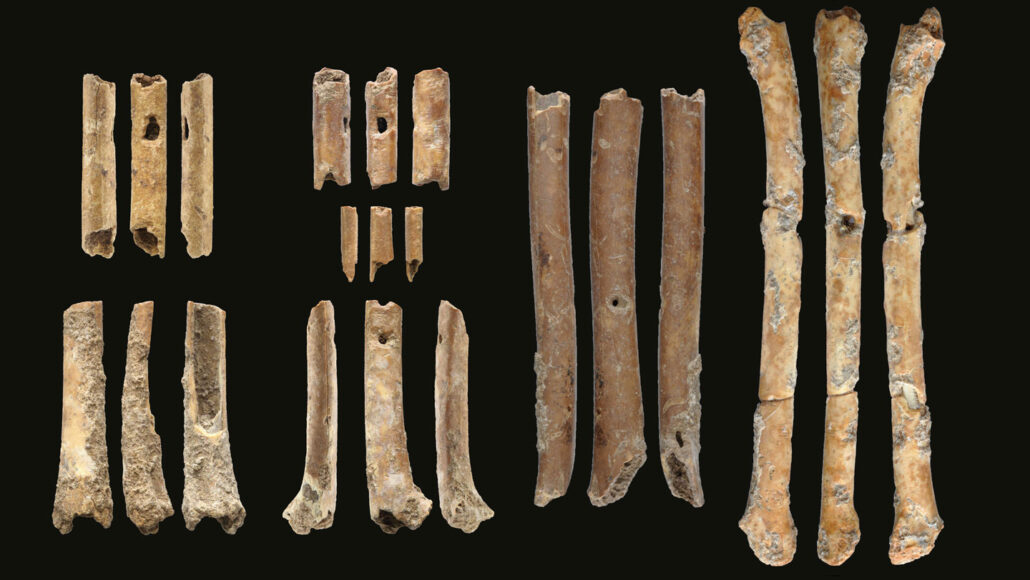Falcon Luring Possibly Enabled with Ancient Flutes

Excavations at a lakeside settlement in northern Israel have yielded what may be the oldest wind instruments ever found in the Middle East, as an article in Scientific Reports explains. The small, perforated flutes were discovered among the remains of early hunter-gatherer stone dwellings at the Eynan-Mallaha site and were made from the wing bones of waterfowl. It is possible that the flutes were used to make music, employed to call birds or even for communicating over short distances. Laurent Davin, an archaeologist at the Hebrew University of Jerusalem, led the team investigating the flutes.
Microscopic analyses of the Eynan-Mallaha instruments indicate that the finger holes were carved by humans, rather than being gnawed by rodents or predators. Davin’s team even made a detailed replica of the largest flute using the wing bone of a female mallard to demonstrate the high-pitched notes and suggest that the instruments may have been used to lure birds. The researchers also speculate that the residents of Eynan-Mallaha may have worn the flutes themselves when hunting. The largest of the seven flutes was decorated with red ochre and exhibited a worn section indicating it had been attached to a string or strip of leather.
The date of the flutes makes them the oldest wind instruments discovered in the Middle East, though musical instruments manufactured from bone and ivory have been found in Germany that are even older. The Eynan-Mallaha site was occupied by hunter-gatherers until 12,000 years ago – at which point its inhabitants were displaced by farmers moving south from modern-day Turkey.
Science journalism is a critical element of public understanding of the natural world. Please support our work by donating today to ensure that we can continue to offer accurate, compelling reports on scientific discoveries.




